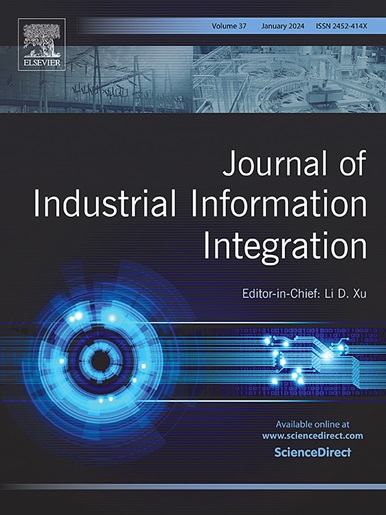人工智能增强的数字孪生的互操作性
IF 10.4
1区 计算机科学
Q1 COMPUTER SCIENCE, INTERDISCIPLINARY APPLICATIONS
引用次数: 0
摘要
当在协作中使用多个数字孪生时,互操作性是最大的挑战之一。尽管标准化和定义接口的尝试取得了重大进展,但真正的互操作性仍然难以实现。这是由于未陈述的假设、背景因素和传统方法未涵盖的质量特征。本文提出了一个组合框架,该框架使用元模型以结构化的方式捕获上下文因素和质量特征,这是模型之间兼容性所必需的。这是通过开发一个元模型来实现的,该元模型明确表示可用于决定数字孪生模型是否可以有效组合的质量特征。通过示例来说明方法的验证,这些示例展示了我们的方法如何识别隐藏的兼容性问题。本文还提供了一种算法,通过将隐式假设和上下文因素明确化,从而为需求评估提供推理逻辑,从而使数字孪生模型的组合更加有效。本文章由计算机程序翻译,如有差异,请以英文原文为准。
Interoperability of AI-enhanced digital twins
Interoperability is one of the biggest challenges when multiple digital twins are used in collaboration. Although attempts to standardise and define interfaces have made significant progress, real interoperability is still difficult to achieve. It is due to unstated assumptions, contextual factors, and quality characteristics not covered by conventional methods. This paper presents a composition framework that uses a meta-model to capture contextual factors and quality characteristics in a structured manner that is required for compatibility between the models. It is achieved by developing a meta-model that explicitly represents the quality characteristics that can be used to decide whether digital twin models can be validly composed. Validation of the approach is illustrated by examples showing how our approach identifies the issues that are otherwise hidden compatibility issues. This paper also provides an algorithm to provide reasoning logic for requirements assessment by making implicit assumptions and contextual factors explicit and enabling the composition of digital twin models to be more effective.
求助全文
通过发布文献求助,成功后即可免费获取论文全文。
去求助
来源期刊

Journal of Industrial Information Integration
Decision Sciences-Information Systems and Management
CiteScore
22.30
自引率
13.40%
发文量
100
期刊介绍:
The Journal of Industrial Information Integration focuses on the industry's transition towards industrial integration and informatization, covering not only hardware and software but also information integration. It serves as a platform for promoting advances in industrial information integration, addressing challenges, issues, and solutions in an interdisciplinary forum for researchers, practitioners, and policy makers.
The Journal of Industrial Information Integration welcomes papers on foundational, technical, and practical aspects of industrial information integration, emphasizing the complex and cross-disciplinary topics that arise in industrial integration. Techniques from mathematical science, computer science, computer engineering, electrical and electronic engineering, manufacturing engineering, and engineering management are crucial in this context.
 求助内容:
求助内容: 应助结果提醒方式:
应助结果提醒方式:


